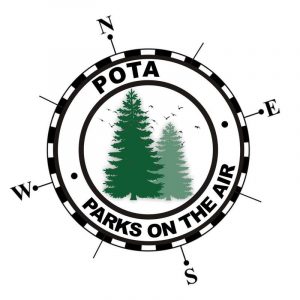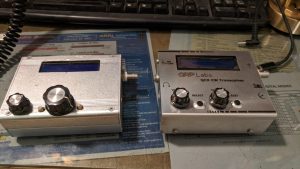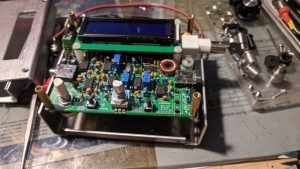Since getting the new radio, I’ve been participating in a program on the air called Parks On The Air. If you’re familiar with Ham Radio, it will probably make sense to you. If not, it might seems a little strange, but it’s a lot of fun and it’s given me a new outlet for my Ham Radio activity.
To put it simply, Parks On The Air, which is referred to by the acronym POTA, is a program where Hams go to certain parks and public locations and set up a radio station. Once there they talk to other Ham radio operators, with the goal being to talk to as many as possible and let the Hams talk to as many parks as possible.
 The POTA program is an outgrowth of the National Parks On The Air program which was held for one year to commemorate the Centennial of the US National Parks system.
The POTA program is an outgrowth of the National Parks On The Air program which was held for one year to commemorate the Centennial of the US National Parks system.
Each park, is given a number which identifies it in the program. Valid parks are state and national parks, monuments, wildlife refuges, forests, and the like. Local, city, county, and town parks are not eligible for the program. Many countries are included in the program and each has a list of designated parks.
There are two groups of Hams in POTA, Activators, those who travel to a park and set up a station, and Hunters, the rest of the Hams who try to make contact with the ones in the parks. There is a lot of overlap between those groups, but to understand the awards for participating in the program, you need to understand the distinction between them.
Activators keep a log of every contact the make while in a park. For an Activation to be considered successful, a minimum of 10 contacts must be made and submitted. The logs go in to the POTA group where volunteers enter them into their database. All parks are kept track of, and Hunters are given credit for the contacts they made. That in turn is used to give a number of awards to both Activators and Hunters.

There are awards for all levels of achievement and many ways to collect them. But just getting certificates isn’t the point. That would get boring pretty fast. The real fun is in activating a park. Despite it being the middle of winter, I’ve gotten out three times to set up my station in a “park” and operate from there. It’s really not hard.
There are some rules, of course. The park must be open. You must be within the boundaries of the “park,” not on private land. You must obey any rules of the park, which vary quite a bit. Some are wildlife refuges or forest preserves with their own special purpose and rules that you must comply with. But most parks, because they are public land also invite and encourage public use within those limits. Mostly, they are pretty accommodating to Ham Radio.

So far, I have been able to set up inconspicuously in parking areas and sit in my truck to operate. When nicer weather comes along, a picnic bench will be more comfortable. I have operated from three wildlife refuges and from a trailhead on the Erie Canalway Trail.

There are a dozen or so designated parks within a short drive from me. As the weather improves, I hope to get out to activate more of them. It’s a blast! It’s like Field day, but in small, easy chunks. You can do it however you like. You can drive to a lot in a park. or you can hike deep into it. It’s perfect for QRP operation and is viable for CW (Morse code) Voice, and Data modes. It’s good for HF, VHF and UHF bands. Or, you can set up in a shelter and operate high power. Antennas can be as simple as a portable compact vertical, or a wire dipole, or a high mast with an elaborate antenna, as long as you don’t violate park rules and can manage it yourself. Simple is often the best.

So, this post is getting long. Where am I going with it? I hope to share a little of what goes into this activity and what about it appeals to me. Isolation due to COVID-19 has limited some of the things we used to look forward to, but with this I can still get outdoors, get some fresh air, and play around with radios. It has me back experimenting with some portable antennas that I’ve had on the back burner for quite a while. It’s a good way to promote our various parks, nature preserves, forests and wildlands, and do it in a low-impact, nature friendly way. It will only be more fun as the warm weather approaches.




